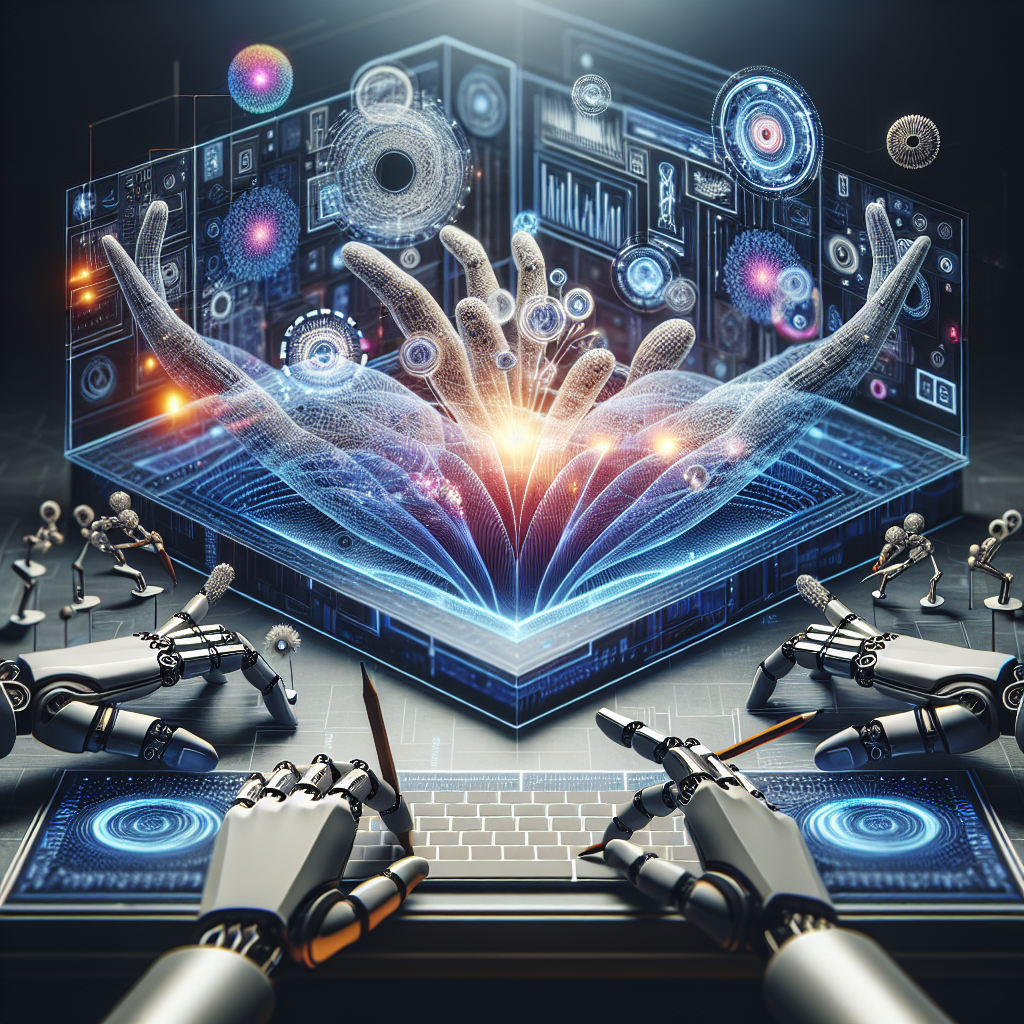In recent years, artificial intelligence (AI) has been making significant strides in transforming various industries, including design. The integration of AI in the creative process has opened up new possibilities and opportunities for designers to enhance their work and streamline their workflow. From generating unique design concepts to automating repetitive tasks, AI is revolutionizing the way designers approach their work.
One of the key ways AI is transforming the design process is through the use of generative design. Generative design involves using algorithms to explore a vast number of design options and come up with innovative solutions that may not have been possible through traditional methods. This allows designers to quickly generate and evaluate multiple design alternatives, helping them to find the most efficient and effective solution for their project.
AI-powered tools also play a crucial role in helping designers to optimize their designs for better performance and functionality. By analyzing data and simulating various scenarios, AI can help designers to make more informed decisions about their designs, leading to better outcomes. For example, AI can be used to optimize the aerodynamics of a car design or the energy efficiency of a building, helping designers to create more sustainable and efficient solutions.
Furthermore, AI can assist designers in automating repetitive tasks, such as resizing images, formatting text, or organizing files. By offloading these mundane tasks to AI-powered tools, designers can focus more on the creative aspects of their work and spend less time on repetitive administrative tasks. This not only improves the efficiency of the design process but also allows designers to explore more creative possibilities and experiment with new ideas.
Another area where AI is transforming the design process is in the realm of personalization. AI-powered tools can analyze user data and preferences to create customized design solutions that cater to the individual needs and preferences of users. This level of personalization can enhance the user experience and help designers to create more engaging and relevant designs that resonate with their target audience.
In addition to enhancing the design process, AI is also enabling designers to explore new creative possibilities and push the boundaries of traditional design practices. For example, AI can be used to create art and design pieces that blur the lines between human and machine creativity, leading to new and innovative design concepts that challenge our perceptions of what is possible.
However, as AI continues to transform the design process, there are also concerns about the impact it may have on the role of designers. Some fear that AI may replace human designers altogether, leading to a loss of creativity and individuality in the design industry. While it is true that AI can automate certain tasks and streamline the design process, it is important to recognize that AI is a tool that complements and enhances human creativity, rather than replacing it.
Ultimately, the future of design is likely to be a hybrid model that combines the strengths of AI and human creativity to create innovative and impactful design solutions. By embracing AI as a powerful tool in the design process, designers can unlock new possibilities and push the boundaries of creativity in ways that were previously unimaginable.
FAQs:
Q: Will AI replace human designers in the future?
A: While AI has the potential to automate certain tasks and streamline the design process, it is unlikely to replace human designers altogether. AI is a tool that complements and enhances human creativity, rather than replacing it. Human designers bring a unique perspective, intuition, and creativity to the design process that AI cannot replicate.
Q: How can AI help designers in the creative process?
A: AI can help designers in a variety of ways, such as generating design concepts, optimizing designs for performance and functionality, automating repetitive tasks, and personalizing design solutions for individual users. By offloading mundane tasks to AI-powered tools, designers can focus more on the creative aspects of their work and explore new creative possibilities.
Q: What are some examples of AI-powered design tools?
A: There are a variety of AI-powered design tools available that can help designers in their creative process. Some examples include Adobe Sensei, which uses AI to enhance creative workflows in Adobe Creative Cloud, and Canva, which uses AI to assist users in creating professional-looking designs quickly and easily.
Q: How can designers prepare for the future of design with AI?
A: Designers can prepare for the future of design with AI by embracing new technologies, learning how to use AI-powered tools effectively, and staying up-to-date with the latest trends in AI and design. By incorporating AI into their workflow, designers can enhance their creativity, efficiency, and effectiveness in creating impactful design solutions.

